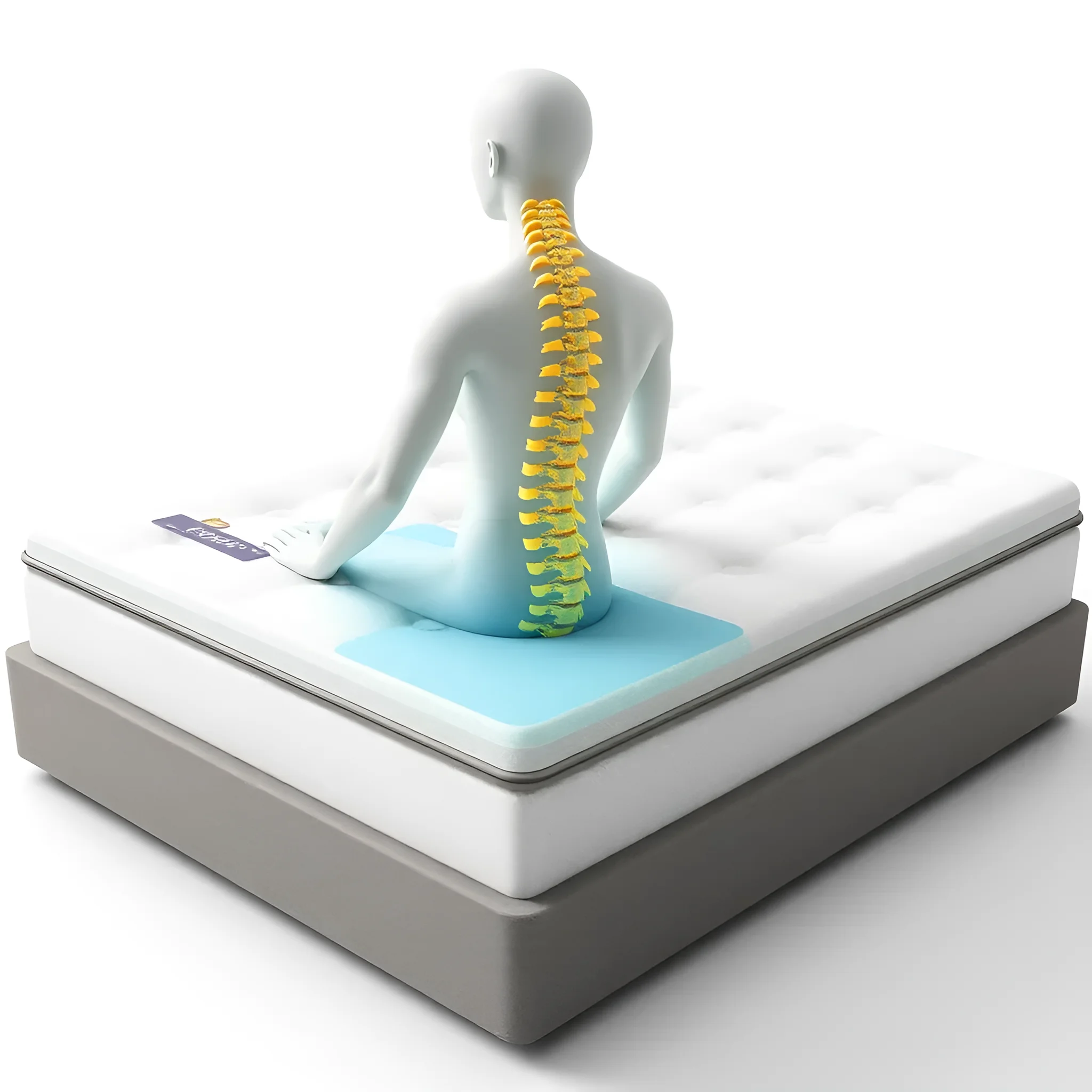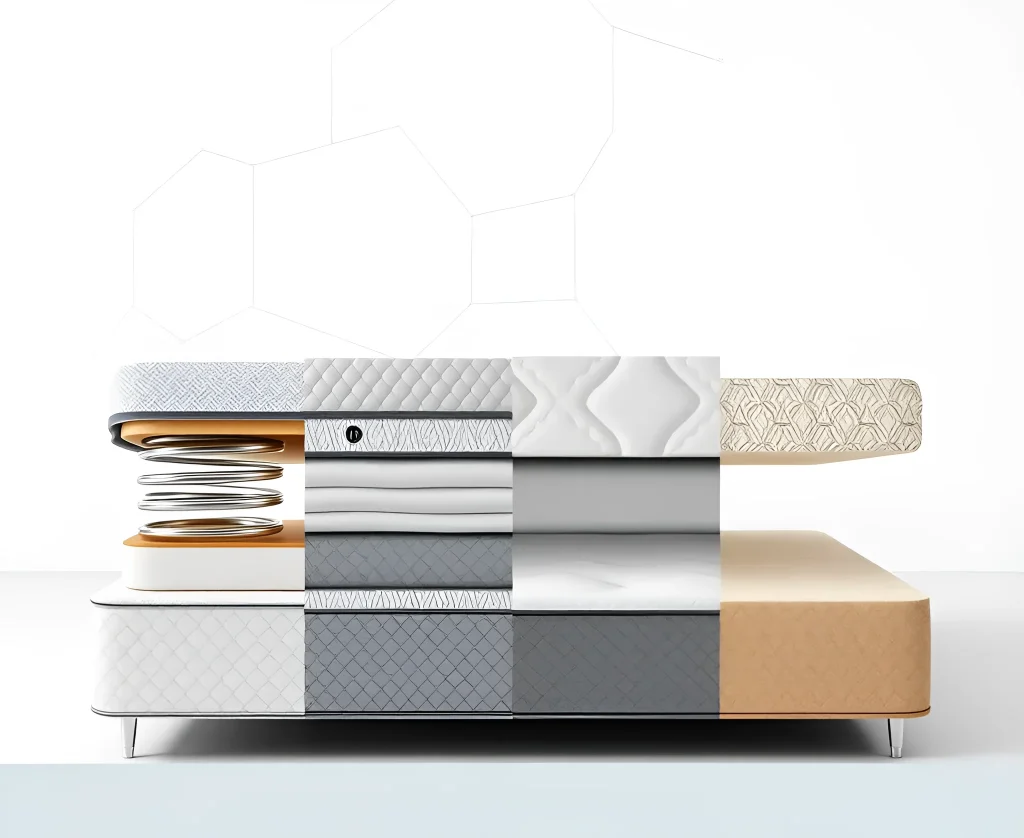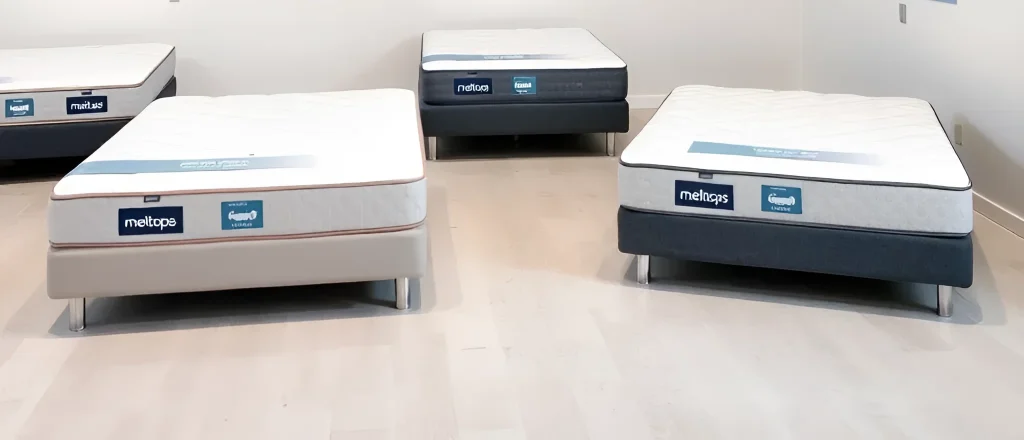Choosing a mattress is not just a furniture purchase, it’s an investment in your health, productivity, and quality of life for the next 7-10 years. As a professional interior designer, I always emphasize that the bedroom is a sanctuary of rest, and the mattress is its altar. Lack of sleep, chronic back pain, morning grogginess – all of this can be a direct consequence of choosing the wrong sleeping surface. In today’s fast-paced life in Ukraine, where every minute of rest counts, the approach to selection must be as conscious and pragmatic as possible.
Fortunately, today there’s no need to spend days traveling to offline showrooms. The market offers a huge assortment online, but this is precisely where the main difficulty lies: how to choose the ideal option without touching it? The goal of this article is to provide you with a comprehensive guide that will help you understand materials, technologies, and features, so you can make the most profitable and, most importantly, the right mattress purchase. If you’re looking for where to buy a mattress in Ukraine that meets all your physiological and budget requirements, the mebeltops.com online store offers a wide range of solutions, which we will discuss in detail within the context of our recommendations.
How to Choose the Ideal Mattress in Ukraine: A Complete Guide
The process of choosing a mattress is often compared to buying shoes. It should fit you perfectly, take into account your individual characteristics, and provide support where needed. There is no universal mattress. Your ideal option depends on a complex set of factors: age, weight, presence of chronic diseases, sleeping position, and, of course, budget.
The first thing to understand is that a mattress should provide a neutral spinal position. This means that when you lie down, your spine should maintain the same natural curvature as it does when you stand. If the mattress is too soft, your body sinks in, and your spine bends into a “hammock” shape. If it’s too hard, it presses on your shoulders and hips, disrupting blood circulation and causing discomfort, while your lower back remains unsupported. Our task is to find the golden mean.
Stages of Conscious Selection:
- Needs Assessment: Determine who the mattress is for (child, adult, elderly person, couple) and what health issues (allergies, osteochondrosis, hernias) need to be considered.
- Type Determination: Spring or springless? This is a fundamental decision that affects durability and orthopedic effect.
- Firmness Selection: Depends on weight and sleeping position. This is the most critical parameter.
- Studying Fillers: Coconut coir, latex, memory foam – each material has its function and price.
- Budgeting: A quality mattress is an investment. Calculate the cost over the years of use.
Important to remember: a mattress is not just filler and a cover. It is a complex engineering structure where each layer, from the spring unit to the cover stitching, performs a specific function aimed at ergonomics and durability.
What is a Mattress and Why the Right Choice is So Important for Your Health

A mattress is not just a soft pad. In an orthopedic sense, it is a support system designed to evenly distribute body weight and minimize pressure points. When we sleep, our muscles should relax completely to ensure tissue recovery and regeneration. If the mattress fails to do its job, the muscles, especially along the spine, are forced to work all night, trying to compensate for the incorrect body position. This leads to chronic tension and pain.
Functional Significance of a Quality Mattress:
- Spinal Support (Orthopedic Effect): The main function. The mattress should support the natural S-shaped curve of the spine.
- Comfort (Anatomical Effect): This is the mattress’s ability to conform to the body’s contours, relieving pressure on protruding parts (shoulders, hips). Anatomicality is often provided by the top layers – memory foam or latex.
- Thermoregulation and Hygiene: Modern materials should be breathable to wick away moisture and heat, preventing overheating and the development of bacteria and dust mites.
Ignoring these factors leads to the so-called “old mattress syndrome.” You might not realize that sleep problems are directly related to it until you replace it. If you wake up with back or neck pain, or if you feel you sleep better in a hotel than at home, it’s a clear sign that your current mattress has long since served its purpose.
Mattress Varieties: An Overview of Popular Types

The mattress market in Ukraine offers a huge variety, which can be broadly divided into two main categories: spring and springless. Each type has its pros, cons, and features that are critically important for decision-making.
1. Spring Mattresses
Spring mattresses are divided into two main types:
A. Dependent Spring Unit (Bonnel)
- Description: The springs are interconnected. When you press on one spring, the adjacent ones also sag.
- Pros: Low price, durability, good ventilation.
- Cons: Low orthopedic effect (“hammock” effect), high motion transfer coefficient (if your partner tosses and turns, you’ll feel it).
- Who it’s for: Those looking for a budget solution for a dacha, guest room, or for people with low body weight. Not recommended for constant sleep and back problems.
B. Independent Spring Unit (Pocket Spring)
This is the modern standard for orthopedic mattresses. Each spring is in a separate fabric pocket and works independently of the others.
- Orthopedic Effect: Ideal. The mattress conforms to the body’s contours point by point, providing even support.
- Motion Minimization: Partner’s movement is practically not felt.
- Varieties: There are units with different numbers of springs per square meter (e.g., TFK – 256 pcs/m², Multipocket – 500+ pcs/m²). The more springs, the more precise the support and the higher the price.
- Who it’s for: Anyone who values orthopedic support, especially couples and people with lower back problems.
2. Springless Mattresses
The base consists of monoblocks or combinations of layers made from various materials.
A. Mattresses with Memory Foam
- Description: Viscoelastic polyurethane foam that reacts to body heat and weight, conforming to its contours.
- Pros: Reduces pressure on joints, ideal for people with arthritis or circulation problems. Provides high anatomical comfort.
- Cons: Can be warm (though modern models with gel inserts solve this problem). Slow to regain shape.
- Who it’s for: Elderly people, side sleepers, and people with sensitive joints.
B. Latex Mattresses
- Natural Latex: Made from the sap of the rubber tree. A very elastic, durable, and breathable material.
- Artificial Latex (High-Density PU Foam): More budget-friendly, but also provides good support.
- Pros: Excellent elasticity, durability (up to 15-20 years), hypoallergenic, excellent ventilation.
- Who it’s for: Allergy sufferers, people who value firm yet soft support.
C. Combined and Hybrid Mattresses
Often, springless mattresses include layers of coconut coir (for firmness and ventilation) and latex or foam (for comfort). Hybrid models combine an independent spring unit with top layers of memory foam. This is an ideal compromise, combining the point support of springs with the anatomical comfort of foam.
How to Choose a Mattress for Your Needs: Considering Weight, Sleeping Position, and Individual Preferences
Choosing firmness is not a matter of taste, but of physics and anatomy. Incorrect firmness is the main cause of discomfort. Mattress firmness in Ukraine is usually rated on a scale from H1 (soft) to H5 (very firm).
1. Considering Body Weight
Weight is a key factor determining how deeply you will sink into the filler.
- Weight up to 60 kg (Light Category): Soft or medium-soft mattresses (H1-H2) are required. A too-firm mattress will not allow shoulders and hips to sink sufficiently, leading to pressure and pain. Ideal options are springless models made of latex or Memory foam.
- Weight 60–90 kg (Medium Category): A medium firmness level (H3) is optimal. Independent Pocket Spring units with a moderate layer of coconut coir or dense PU foam are suitable.
- Weight over 90 kg (Heavy Category): Firm or very firm mattresses (H4-H5) are required. Reinforced spring units (e.g., with increased wire diameter or Multipocket) and thick layers of coconut coir are necessary to prevent sagging.
Tip for couples with a weight difference: If the weight difference between partners exceeds 25-30 kg, consider either zoned mattresses (where firmness zones are adapted to different body parts) or two separate mattresses in one cover (Dual Core technology), which are often offered by leading brands on mebeltops.com.
2. Considering Sleeping Position
Sleeping position directly affects where maximum pressure relief is needed.
- Sleeping on your side (Most common position): A medium-soft or medium mattress is required. Sufficient softness is needed for the shoulder and hip to sink in, maintaining a straight spine. Ideal: Memory Foam, latex, Pocket Spring with a soft top layer.
- Sleeping on your back: A medium or medium-firm mattress is required. The spine should be supported in the lumbar region. Too soft a mattress will cause the lower back to sag. Ideal: Zoned Pocket Spring, mattresses with coconut coir.
- Sleeping on your stomach: A firm mattress is required. It is necessary to prevent the lower back from arching downwards, which often happens on soft models. A firm surface helps keep the pelvis level with the shoulders. Important: This position is least recommended by doctors, but if you can’t sleep otherwise, choose H4.
3. Special Needs (Orthopedics)
If you have been diagnosed with serious back problems (hernias, osteochondrosis), be sure to consult an orthopedist. Contrary to a common myth, a “rock-hard” mattress is not always needed. Often, a medium-firm, but anatomical model is required, which provides targeted support without excessive pressure.
Practical Tips for Mattress Care to Make It Last Longer
Even the most expensive and high-quality mattress will lose its properties if not cared for properly. Mattress care is a simple but regular ritual that can extend its lifespan by several years.
1. Regular Flipping and Rotation
This is the most important tip, especially for spring mattresses and models with Memory Foam. A mattress tends to “remember” the body’s shape in areas of greatest pressure. To avoid premature sagging and maintain even firmness:
- In the first three months after purchase, flip the mattress (head/foot) every 2-3 weeks.
- After that, flip it every 3-6 months.
- If the mattress is double-sided (with different firmness, e.g., “winter/summer”), change sides twice a year.
2. Protection from Moisture and Stains
Moisture is the main enemy of a mattress. It promotes the growth of mold, mildew, and bacteria, and also degrades fillers.
- Use a Mattress Protector: A high-quality waterproof mattress protector (cover) is an absolute must-have. It will protect against sweat, spills, and dust mites. A mattress protector is much easier to wash than to clean the mattress itself.
- Do not use water for cleaning: If you need to clean a stain, use dry foam or specialized cleaning agents. Avoid excessive wetting.
3. Ventilation
A mattress needs to “breathe.” Every night it absorbs moisture. If you use dense bedding or a blanket, moisture remains trapped inside.
- Regularly air out the mattress: Remove bedding once a week for a few hours to allow the mattress to dry.
- Ensure good air circulation under the mattress: Use a slatted base (lamellae) instead of a solid sheet of plywood. This allows for ventilation from below.
4. Proper Base
The mattress should rest on a flat, sturdy base appropriate for its type. Slatted bases (lamellae) are suitable for most orthopedic mattresses. If the lamellae are too far apart, it can lead to spring deformation.
Top 5 Solutions for Different Back Types and Needs: A Mattress Selection from mebeltops.com (Conceptual Examples)

To simplify the selection process, let’s consider typical situations and determine which mattress characteristics would be most beneficial for each. While we cannot name specific models, we will describe the ideal characteristics you will find in the mebeltops.com assortment.
Solution 1: For people with chronic lower back and joint pain
- Requirements: Maximum anatomical effect, point support, no counter-pressure.
- Ideal Choice: A hybrid mattress with an independent spring unit (Pocket Spring 7 zones) and a thick top layer (5-7 cm) of memory foam.
- Firmness: Medium (H3).
- Advantage: Memory foam reduces pressure on painful points, and the zoned spring unit supports the lower back.
Solution 2: For a couple with a large weight difference
- Requirements: High stability, motion transfer minimization, reinforced construction.
- Ideal Choice: A mattress with a reinforced Multipocket unit (over 500 springs/m²) or two connected mattresses. The filler should include dense PU foam and coconut coir in the middle section for stability.
- Firmness: Medium-firm (H3-H4).
- Advantage: The high spring density ensures that the heavier partner does not sink in, and movement does not disturb the other.
Solution 3: For allergy sufferers and those who value eco-friendliness
- Requirements: Hypoallergenic, natural, breathable materials, mite resistance.
- Ideal Choice: A mattress made of 100% natural latex (monoblock) or a combined mattress with latex and coconut coir. The cover should be removable, made of natural fabrics (cotton, bamboo).
- Firmness: Soft or medium (H1-H3).
- Advantage: Latex is a natural antiseptic, does not accumulate dust or moisture, which is critical for allergy sufferers.
Solution 4: For teenagers and young adults (active growth)
- Requirements: Reliable, even support for the developing spine, durability.
- Ideal Choice: A springless mattress made of high-resilience, high-density PU foam (HR Foam) or an independent spring unit with minimal soft layers.
- Firmness: Medium-firm (H3-H4).
- Advantage: Provides correct body posture during growth, resistant to high loads.
Solution 5: Budget-friendly, yet quality option
- Requirements: Good support on a limited budget, wear resistance.
- Ideal Choice: A springless mattress made of modern high-density polyurethane foam (PU foam). It’s important to look at the density of the foam (preferably above 30 kg/m³), not just its thickness.
- Firmness: Medium (H3).
- Advantage: Modern PU foam provides an orthopedic effect similar to latex, but at a significantly lower price.
Where to Buy a Mattress Profitably in Ukraine: Advantages of the mebeltops.com Online Store
Buying a mattress online in Ukraine can be more profitable and convenient than traditional shopping, provided you are working with a trusted supplier that provides complete product information and guarantees. The mebeltops.com online store has established itself as a platform focused on quality and transparent transactions.
1. Wide Assortment and Specialization
Unlike regular furniture stores, online platforms like mebeltops.com offer products from numerous Ukrainian and international manufacturers. This allows you to compare features, materials (from coconut coir to innovative gel foams), and prices in one place, without being limited to just one or two brands.
2. Transparency of Information and Specifications
When buying a mattress, it is critically important to know its composition (foam density, number of springs, layer thickness). In a physical store, this information often has to be extracted from consultants. On mebeltops.com, all key parameters (maximum weight, height, firmness, filler composition) are clearly indicated in the product card, allowing you to make decisions based on facts, not just “sat down and liked it” feelings.
3. Favorable Pricing Policy
Online stores save on renting large retail spaces and maintaining a large staff of salespeople. These savings are often passed on as lower prices to the end consumer. Additionally, mebeltops.com regularly runs promotions and offers discounts on popular models, making the purchase of a quality orthopedic mattress more affordable.
4. Convenient Logistics and Delivery Across Ukraine
A mattress is a bulky item. When buying online, you don’t have to worry about its transportation. mebeltops.com provides delivery to all regions of Ukraine, often offering delivery to your floor. This is a critically important convenience factor, especially when purchasing larger mattress sizes (King Size).
5. Professional Online Consultation
If you have doubts about firmness or filler type, you can always get a consultation that will help match your weight, sleeping position, and medical recommendations to a specific model from the catalog. This replaces the need to “lie down” on the mattress, as the consultant relies on technical specifications.
Common Mistakes When Choosing a Mattress and How to Avoid Them
Even with a comprehensive guide, buyers often make the same mistakes, leading to disappointment and the need for repurchase. Knowing these pitfalls will help you avoid them.
Mistake 1: Buying a mattress solely based on the criterion “firm = orthopedic”
This is the most dangerous myth. An excessively firm mattress, especially for people with low body weight or those who sleep on their side, will not allow the shoulders and hips to sink in. This will lead to an unnatural spinal curve and pressure on the joints. Avoid: Choose firmness that matches your weight and sleeping position. An orthopedic mattress is one that provides proper support, not just one that is very firm.
Mistake 2: Ignoring filler density
Two foams can look identical but have different densities. Cheap, low-density foam will sag quickly (in 1-2 years). Quality PU foam (Hollofiber, HR Foam) should have a density of at least 30 kg/m³. When choosing a springless mattress, always clarify the material’s density, not just its name.
Mistake 3: Focusing solely on price
A mattress is a long-term investment. Buying a too-cheap mattress (especially a Bonnel spring or a thin springless one with low-density foam) is guaranteed to lead to its replacement within 3-4 years. It’s better to increase the budget slightly and buy a quality model that will last 8-10 years than to constantly spend on replacing low-quality items.
Mistake 4: Not considering compatibility with the base
If you buy an expensive orthopedic mattress but place it on an old, sagging, or solid (non-ventilated) base, you negate all its benefits. Ensure your base is flat, sturdy, and preferably slatted. For heavy springless mattresses, a base with more closely spaced lamellae is often required.
Mistake 5: Underestimating the trial period (if offered)
Some manufacturers in Ukraine, represented on mebeltops.com, offer a trial period (e.g., 30-100 nights). This is an invaluable opportunity. You cannot determine if a mattress suits you by lying on it for 5 minutes in a store. The body needs at least 2-3 weeks to get used to a new surface. Always clarify the return or exchange conditions.
Choosing a mattress is a complex but fascinating process that directly affects your well-being. We have discussed how important it is to consider not only your budget but also your physiological needs: weight, sleeping position, and health status. Remember: investing in a quality orthopedic mattress is an investment in your longevity and energy.
Use this guide to consciously approach the selection of fillers, firmness, and construction. And for a profitable and guaranteed purchase in Ukraine, turn to trusted online platforms. On mebeltops.com, you will find the full spectrum of solutions, from budget-friendly PU foam to premium latex and hybrid models, which will help you create the ideal conditions for complete nightly rest.














